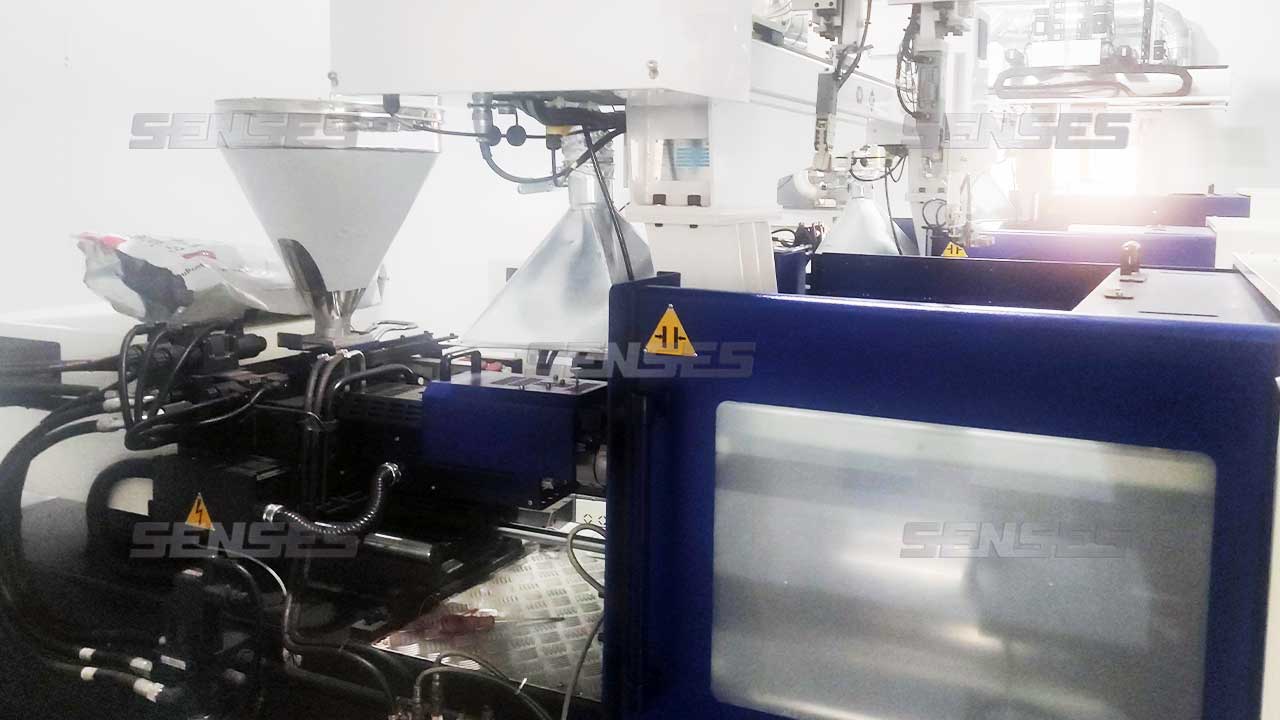Injection molding has become an omnipresent force in manufacturing, playing a pivotal role in the creation of the majority of plastic products worldwide. Remarkably, injection molding consistently emerges as the most cost-effective solution for generating parts in medium to high volumes, making it the go-to choice in the realm of plastic parts manufacturing.
What is Injection Molding Plastics?

At its core, injection molding is a sophisticated manufacturing process that involves injecting molten plastic into meticulously designed molds. The mold, intricately crafted to shape the plastic as it cools and solidifies, enables the mass production of an array of plastic components. From intricate gears to automotive panels, the versatility of injection molding is vast.
How It Works?
The injection molding plastics process is a manufacturing technique used to produce a wide range of plastic parts and products. It is a highly versatile and efficient method that involves several key steps:
Clamping:
The process begins with the clamping of the mold. The mold is a two-part tool, usually made of steel or aluminum, that has a cavity in the shape of the desired final product. The two halves of the mold are brought together and clamped tightly to prevent any plastic from escaping.
Injection:
Plastic pellets or granules are fed into a heated barrel. The material is then melted and pressurized before being injected into the mold cavity. The plastic takes the shape of the mold, filling all the contours and intricacies of the design.
Cooling:
Once the mold is filled, the molten plastic is allowed to cool and solidify. Cooling times can vary depending on the material used and the thickness of the part. Efficient cooling is essential for maintaining the desired shape and properties of the finished product.
Opening the Mold:
After the plastic has solidified, the mold is opened, revealing the newly formed plastic part. The mold’s two halves are separated, and the part is ejected. Some molds have ejector pins that push the part out, while others rely on gravity.
Finishing Touches:
The ejected part may undergo additional processes, such as trimming or secondary machining, to achieve the final desired shape. Any excess material, called flash, is removed during this stage.
Repeating the Cycle:
The entire cycle of clamping, injection, cooling, mold opening, and finishing is then repeated for the production of additional parts. Injection molding is widely used for its ability to produce large quantities of high-quality, identical parts with tight tolerances.

The 9 Advantages of Injection Molding Plastics
Injection molding plastics offer several advantages, making it a widely used manufacturing process across various industries. Here are some key advantages:
High Efficiency and Speed:
Injection molding allows for the production of large quantities of identical parts with minimal cycle times. The rapid cooling of molten plastic within the mold contributes to quick production cycles, enhancing overall efficiency.
Precision and Accuracy:
The process enables the creation of intricate and complex shapes with high precision. Tight tolerances can be consistently maintained, ensuring that each molded part meets the required specifications.
Cost-Effective for Large Production Runs:
Injection molding is highly cost-effective for large-scale production. Once the initial tooling costs are covered, the cost per unit decreases significantly as production volume increases. This makes it a favorable choice for mass production.
Versatility in Material Selection:
A wide range of thermoplastics and thermosetting plastics can be used in injection molding. This versatility allows manufacturers to choose materials that meet specific performance, durability, and appearance requirements.
Reduced Material Waste:
The precision of injection molding minimizes material waste. The sprues and runners (excess material) can often be recycled, contributing to a more sustainable manufacturing process.
Consistency and Repeatability:
Injection molding ensures consistent part quality throughout a production run. The automated and controlled nature of the process reduces the likelihood of variations or defects, providing reliable and repeatable results.
Complex Part Geometry:
Injection molding can accommodate intricate part designs and complex geometries that might be challenging or impossible with other manufacturing methods. This is particularly beneficial for industries requiring specialized and customized components.
Wide Range of Applications:
The versatility of injection molding makes it suitable for a diverse range of industries, including automotive, electronics, medical devices, consumer goods, and more. It is used to manufacture a wide array of products, from small components to larger, more complex parts.
Minimal Post-Processing Required:
The molded parts often require minimal post-processing. This can lead to further time and cost savings, as the parts are closer to the final desired state right out of the mold.
Understanding these advantages helps explain why injection molding is a preferred choice for many manufacturers seeking efficient, precise, and cost-effective solutions for producing plastic components.
Senses: Your Trusted Partner in Plastic Injection Molding
Senses is your reliable ally in the realm of plastic injection molding, offering a comprehensive suite of services that includes mold and part design, prototyping, small-batch production, and full-scale manufacturing. We are poised and eager to collaborate on your next project. Contact us now, and discover the satisfaction of choosing Senses for your injection mold manufacturing and processing needs.
Why Choose Senses:
End-to-End Solutions: We provide a seamless experience from design to manufacturing, offering comprehensive solutions for all your injection molding needs.
Excellence at Every Stage: Our dedicated team of experts ensures precision and perfection in mold and part design, prototyping, and throughout the production process.
Competitive Pricing: Experience cost-effective solutions without compromising on quality. Senses offers highly competitive prices for all our injection molding services.
Our dedication to quality goes beyond our ISO 9001:2015 certifications; it marks just the beginning of our commitment. Senses embraces a continuous improvement program, incorporating new technologies, refining manufacturing processes, and reducing waste. These efforts are all aimed at delivering the highest quality injection-molded components, ensuring your project’s success and satisfaction.





